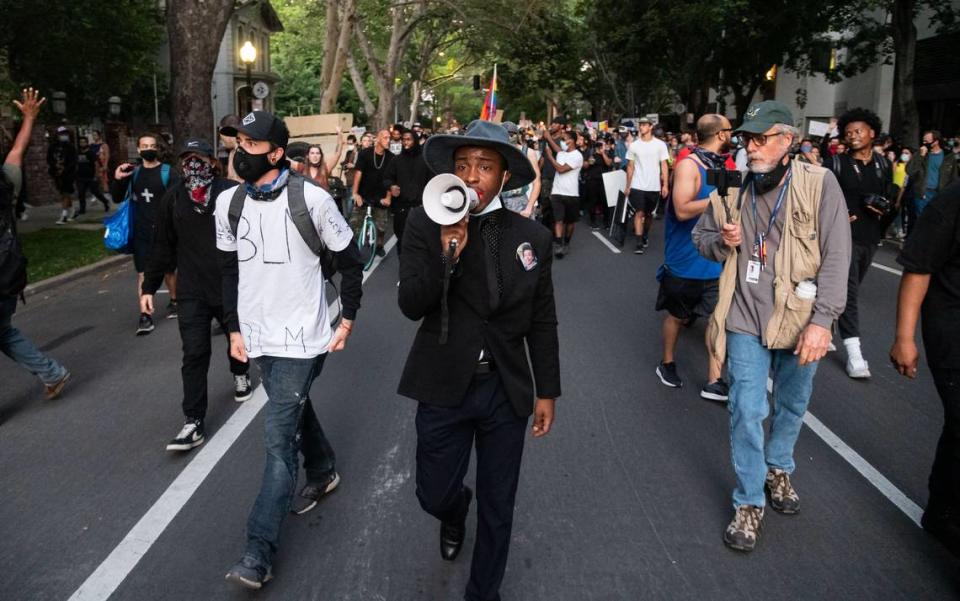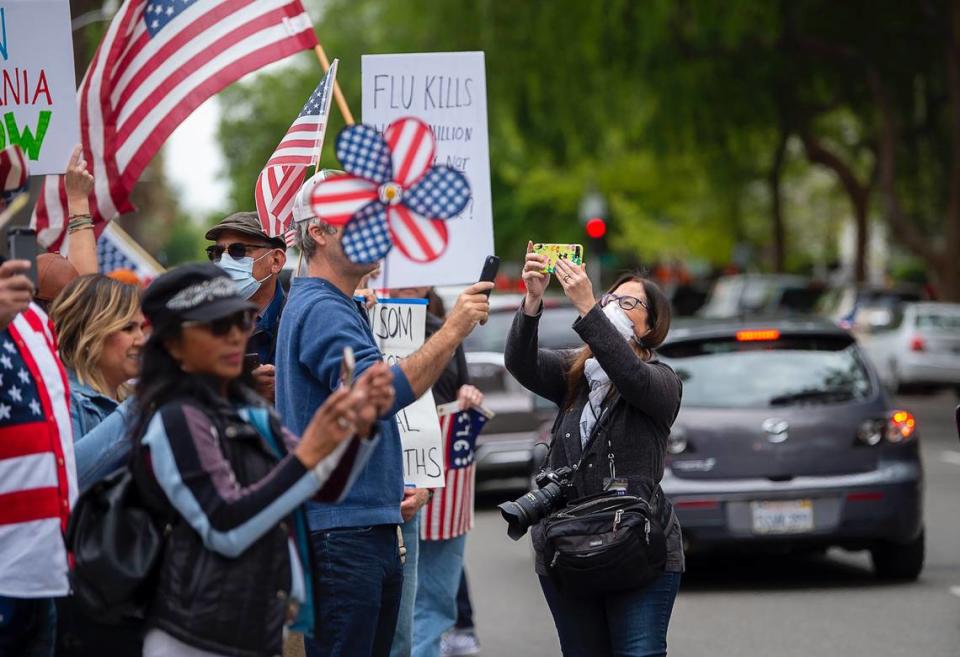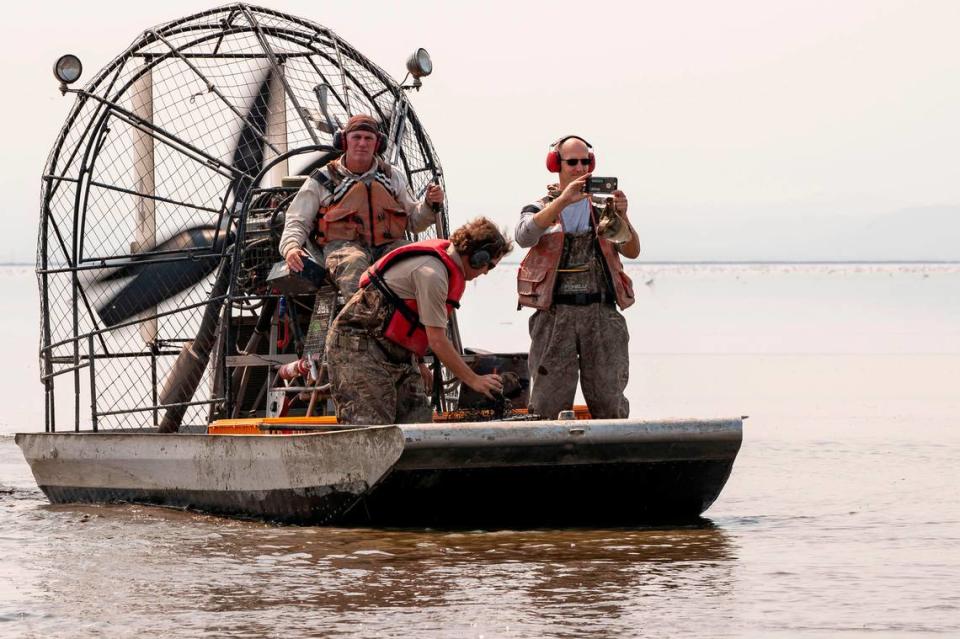Our 2020 newsroom, your news: We are always looking forward to help guide you
- Oops!Something went wrong.Please try again later.
Let’s peer through our time-travel glasses. About a year ago, we were, as usual, counting down to a new year, entering the ’20s. Football fans wondered if the 49ers would head to the Super Bowl. District attorneys were planning a trial for the Golden State Killer. You were scoping out the times for the fireworks display in Old Sacramento.
And on another continent, the Wuhan Municipal Health Commission in China reported a surge in pneumonia cases. The news that followed – about a SARS virus, a wet market, bats, the SARS-CoV-2 novel coronavirus, the deaths afar, the potential for spread – provided mostly worrying background noise. Then. To most of us.
In The Sacramento Bee newsroom, we listened. Here, we are hyper aware that California has a West Coast doorway to the world. We monitor global news to check for signs of how it will affect us.
As editors, we talked about the virus in early January before it ostensibly reached our homes. We assigned a small task force of three reporters to dog it.
Our health reporter Cathie Anderson grew alarmed. She walked from her desk in a corner of the newsroom to our central editing desks and told her editor Dan Hunt: “This is big, it’s going to be very serious.”
No reporter wants to be wrong but, in this case, maybe Cathie did. She, with reporter Darrell Smith, were well-positioned to cover the arrival of two jets carrying coronavirus evacuees to Travis Air Force Base in February. They already had been reporting on the topic for a month.
And our year, your year, shrouded in pandemic arrived. And through it all, we have been thinking ahead to help guide you.
That old adage of journalism being the first draft of history informs us, but also confines us way too much. Our journalists peer through a windshield to see what’s ahead as much as they look into a rearview mirror to see where we have been.
Best of 2020: See the photos Sacramento Bee readers liked most on Instagram
Through 2020, we have tried to be a coronavirus Waze to help you know where we were headed. We face that challenge every year, but most annual cycles have some predictability, even with the most chaotic events. In California, we sadly know disasters like seasons – Floods, Fires, Drought, More Fires. We had devastating fires, and rolling blackouts, and bad air that trapped us inside with no place to go anyway.
We had never had our lives collapse under the weight of a pandemic before. Most of the year was stamped with COVID-19. We did cover the plea and sentencing of Joseph James DeAngelo, the Golden State Killer, in a court filled with DAs, legal papers and face masks. We did cover an election remotely. We did cover the 49ers and the Kings, also remotely. And we learned to reach out in new ways.
Our journalists are here for you
We were there for you. And we are here for you.
For us, “here” is now a little spread out. Cathie, Darrell and all the reporters communicate remotely with their editors. On March 11, editors in the early evening stood in front of a large TV and watched the Sacramento Kings and New Orleans Pelicans leave the Golden 1 Center floor. Ryan Lillis, our assistant managing editor for local news, had felt it coming. “The NBA is going to shut down,” he said earlier. “They’re going to stop the games.”
Ryan probably wanted to be wrong, too, but like Cathie, like our other journalists, he not only focused on covering what had happened, he had gathered information about what was to come.
The NBA did suspend play. Our newsroom emptied two days later. The next week, columnist Marcos Bretón interviewed a Sacramentan in lockdown in Spain. “You ain’t seen nothing yet,” he said.
We joined in shelter-in-place, remote lives, and we covered them, too. We were remote yet connected.
We know you are awash now in stories about 2020, all tinged with the sense that a pandemic somehow can care about the calendar, that the end of a bad year means the end of bad times. The post-holiday coronavirus surge will stay with us past the stroke of midnight Dec. 31 as we welcome 2021. We still share the simple idea that in a new year, this just has to get better.
It will. Of course it will, eventually. And we will be as ever-vigilant in leaning forward into the news, informing you about what comes next.
We wrote 3,000 stories about the coronavirus and have already embarked on the next stage of reporting, chronicling the arrival of vaccines and the sense of hope it brings. If you wanted to know what was coming in COVID restrictions in Sacramento, reporter Tony Bizjak routinely gave us all a heads up. Reporter Michael McGough and others continue to provide daily coronavirus updates. Reporter Benjy Egel stayed ahead of the tumultuous dining scene and Bretón broke the news of the closing of Biba, a Sacramento institution, quoting the daughter of the restaurant’s namesake: “This feels like a second death. It feels like my mom died again.”
We are dedicated to crafting guides on what you need to know, monitoring related economic news and government action regarding the pandemic, and providing video discussions to help you understand the unfolding news events.
So, yes, we’re here for you, wherever “here” is. And we’re out there for you, in your community and beyond, all those places closed off because of the danger of spreading the virus. Our reporters and visual journalists don masks, carry sanitizer, and capture what is happening on the streets, in the hospitals, in restaurants, and in the government.
They can eyeball 6 feet now.
We were there for you, too
Our visual journalists captured an array of images of front-line workers, fires and protests. After the killing of George Floyd, our newsroom deployed in continuous galvanized shifts to cover protests and connect the events and emotions, the despair and the dialogue.
The whole newsroom pitched in. Reporter Sam Stanton logged marathon miles while sometimes layering an N95 mask over a cloth mask, carrying a gimbal for his phone and a hot spot for live footage. Visual journalist Paul Kitagaki Jr. was injured. You could hear the somewhat muffled voices of Hannah Wiley and other reporters as they donned masks and went live, day and night.


Staff members became more familiar with the deep swab that is coronavirus testing.
In that one month following Floyd’s death, we published more than 300 stories about racial injustice. We formed the Equity Lab, a journalistic endeavor dedicated to making sure we look forward, as it states in its mission, “for an inclusive future.” And, as reporter Alexandra Yoon-Hendricks asked, “what keeps you up at night?”
We published investigations of nursing homes, the Sacramento Children’s Receiving Home, and the homeless. Our education reporter Sawsan Morrar looked ahead to see how schools would improve distance learning. Sophia Bollag, our reporter covering the governor, examined the early pandemic contracts. Reporter Jason Pohl dug deep into the case of Quinton Watts, looked back, and asked if he was unjustly imprisoned for the 2008 crash of the casino-bound bus that killed 11. Our Editorial Board then looked forward, urging his sentence be commuted. Reporter Ryan Sabalow found solace and offered great reads in venturing north for “Nothing Wild,” a five-part series about what’s next for California’s wilderness and beyond.

What’s next for 2021?
What’s next? What keeps you up at night? Please let us know. Please share with us those concerns and fears that weigh you down, the hopes and dreams that lift you up, the questions that you want answered.
In 2021, how will businesses rebound? What’s in store for our teachers and students? What will our downtown look like? When will we gather for a drink, fireworks, a game without cardboard cutouts, or a laugh not punctuated by “you’re on mute”?
To those who have supported us in this most troubled year, thank you. To those who want to know what’s happening in our communities, we’re here for you, relentlessly pursuing news that shapes our lives, and listening and looking for what’s to come.
Scott Lebar is the managing editor of The Sacramento Bee.

